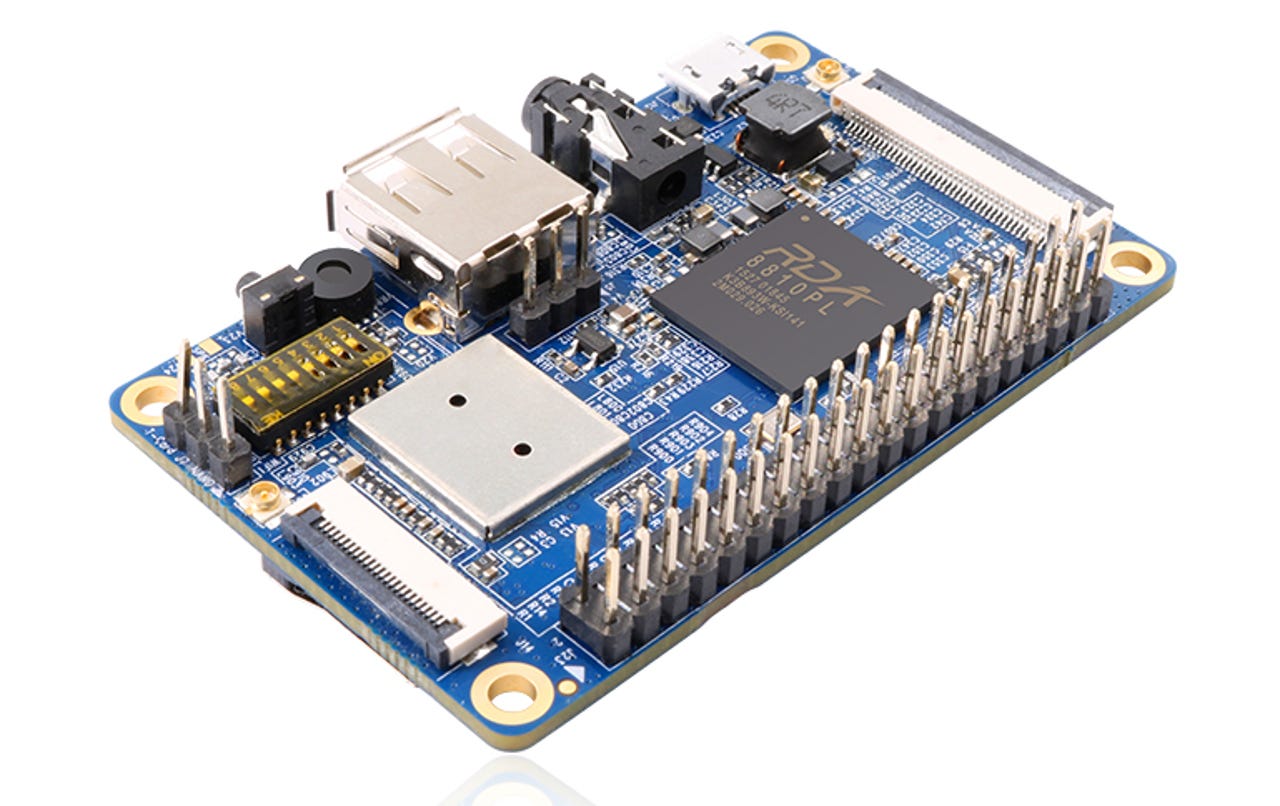Raspberry Pi Zero W rival: New $10 Orange Pi 2G-IoT hooks into mobile networks


The Orange Pi 2G-IoT goes up against the recently released Raspberry Pi Zero W.
Last year the Shenzhen-based maker of the Orange Pi developer board undercut the Raspberry Pi 3 on price but only by sacrificing the better-known board's Wi-Fi.
Now, a new Orange Pi model, dubbed the Orange Pi 2G-IoT, goes in the opposition direction on connectivity, giving builders a 2G antenna for Internet of Things applications, as well as offering wireless LAN and Bluetooth for a price of $10.
The Orange Pi 2G-IoT goes up against the recently released Raspberry Pi Zero W, which also costs $10, and offers wireless LAN and Bluetooth but not mobile network access.
The new Orange Pi board features a 1GHz ARM Cortex-A5 32-bit processor with a Vivante GC860 graphics processor, and 256MB RAM.
It also supports 802.11b/g/n Wi-Fi, Bluetooth 2.1, and features a Raspberry Pi-compatible 40-pin GPIO connector.
Other features include video and audio inputs and outputs, and USB 2.0 ports. The 2G antenna supports GSM/GPRS data connections and there's, of course, a slot to insert a SIM card.
The device can run Android, Ubuntu, Debian, or Raspberry Pi, according to the Orange Pi 2G-IoT listing on Aliexpress.
While the Orange Pi 2G-IoT costs the same as the Raspberry Pi Zero W, the Raspberry board has double the RAM, at 512MB.
But as CNX-Soft notes, before buying the board it might be worth checking which carriers still support 2G. While some will continue to support it for years to come, AT&T, for example, killed its 2G network off at the end of 2016.
And there are still questions about software support, so CNX-Software urges anyone new to using these devices to proceed with caution. Raspberry Pi on the other hand is a known quantity and has a large array of operating systems and software to run on it.
More on Raspberry Pi
- Move over Raspberry Pi, here are a dozen, better alternatives
- Raspberry Pi 2 review: More power to the Pi
- Top Raspberry Pi alternatives, with prices starting at only $5
- TechRepublic: This Raspberry Pi-powered Linux computer packs a keyboard and display into a phone-sized case
- TechRepublic: Raspberry Pi Zero W: The smart person's guide
- TechRepublic: Raspberry Pi Zero W: Hands-on with the $10 board